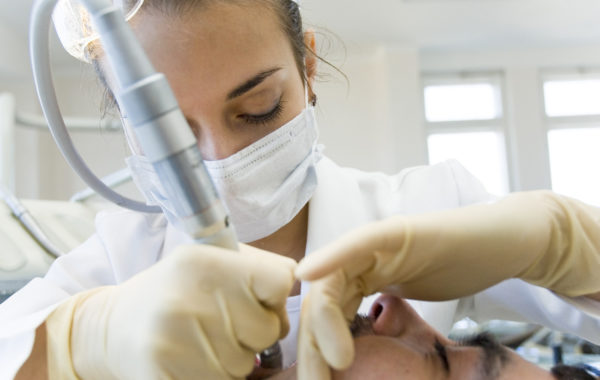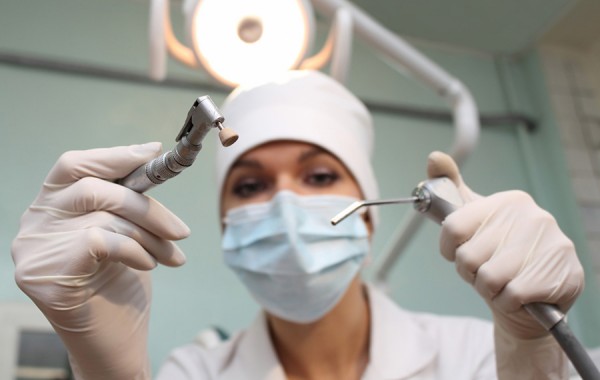Periodontics
Periodontal treatment methods depend upon the type and severity of the disease.
If the disease is caught in the early stages of gum disease(gingivitis), and no damage has been done, one to two regular cleanings will be recommended. You will also be given instructions on improving your daily oral hygiene habits and having regular dental cleanings.
If the disease has progressed to more advanced stages, a special periodontal cleaning called scaling and root planing (deep cleaning) will be recommended. In this procedure, tartar, plaque, and toxins are removed from above and below the gum line (scaling) and rough spots on root surfaces are made smooth (planing). This procedure helps gum tissue to heal and pockets to shrink. Medications, special medicated mouth rinses, and interdental tooth brush may be recommended to help control infection and healing.
If the pockets do not heal after scaling and root planing, periodontal surgery may be needed:
Periodontal Pocket Reduction Procedures
During this procedure, the gum tissue is folded back and the disease-causing bacteria is removed thoroughly. In some cases, irregular surfaces of the damaged bone are smoothed to limit areas where disease-causing bacteria can hide. This allows the gum tissue to better reattach to healthy bone. Reducing pocket depth and eliminating existing bacteria are important to prevent damage caused by the progression of periodontal disease and to help you maintain a healthy smile.
Regenerative Procedures
A regenerative procedure may be indicated when the bone supporting your teeth has been destroyed due to periodontal disease. These procedures can reverse some of the damage by regenerating lost bone and tissue.
During this procedure, the gum tissue is folded back and the disease-causing bacteria is removed thoroughly. Membranes (barriers), bone grafts or tissue-stimulating proteins can be used to encourage your body's natural ability to regenerate bone and tissue.
Gum Grafting Procedures
For patients with excessive gingival recession(loss of gum tissue), gum grafts can be used. During gum graft surgery, gum tissue is taken from your palate or another donor source to cover the exposed roots. A gum graft can reduce further recession and bone loss. In some cases, it can cover exposed roots of teeth and protect them from decay. This may reduce tooth sensitivity and improve esthetics of your smile.
Maintenance
Once your periodontal treatment has been completed, it is recommend that you have regular maintenance cleanings (periodontal cleanings), usually four times a year. At these cleaning appointments, the pocket depths will be carefully checked to ensure that they are healthy. Plaque and calculus that is difficult for you to remove on a daily basis will be removed from above and below the gum line.
Good oral hygiene practices and periodontal cleanings are essential in maintaining dental health and keeping periodontal disease under control.
Categories:
-

Dental Fillings
A filling is a way to restore a tooth damaged by decay back to its normal function and shape. ...…
- 1
- 2

